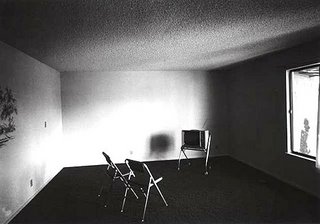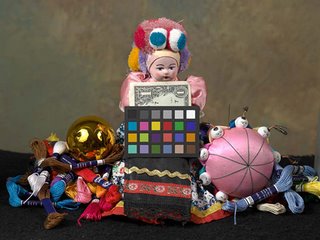
by R.C. Baker @ Village Voice
After an airburst, smoky tendrils trail from a blood-red orb that floats like a gargantuan, haloed jellyfish; a soaring, spiky tower of boiling water erupts from the Pacific seconds after an undersea detonation, dwarfing a decommissioned armada near Bikini Atoll. The artist culled these images from government archives, rephotographing the original prints (1940s–60s) with a large-format camera, which captures the bureaucratic notations of the military-industrial complex—grease-penciled marginalia, ragged binder holes, dog-eared corners, Scotch-taped rips. A nocturnal image of soldiers crouched in the dirt, backs turned and eyes shielded from a distant blast—which throws their stark shadows onto a corrugated-steel wall—conveys the biblical power of these weapons. Even more unsettling is a vision of military V.I.P.'s in shorts lounging on Adirondack chairs as a false sun, bursting over Enewetak Atoll, is reflected in their oversize black goggles. Nothing like a day at the beach.
100 Suns: 036 Grable/15 Kilotons/1953, 2003
Courtesy Hosfelt Gallery, New York/San Francisco
Michael Light: 100 Suns
Hosfelt Gallery
531 West 36th Street
Through May 13











